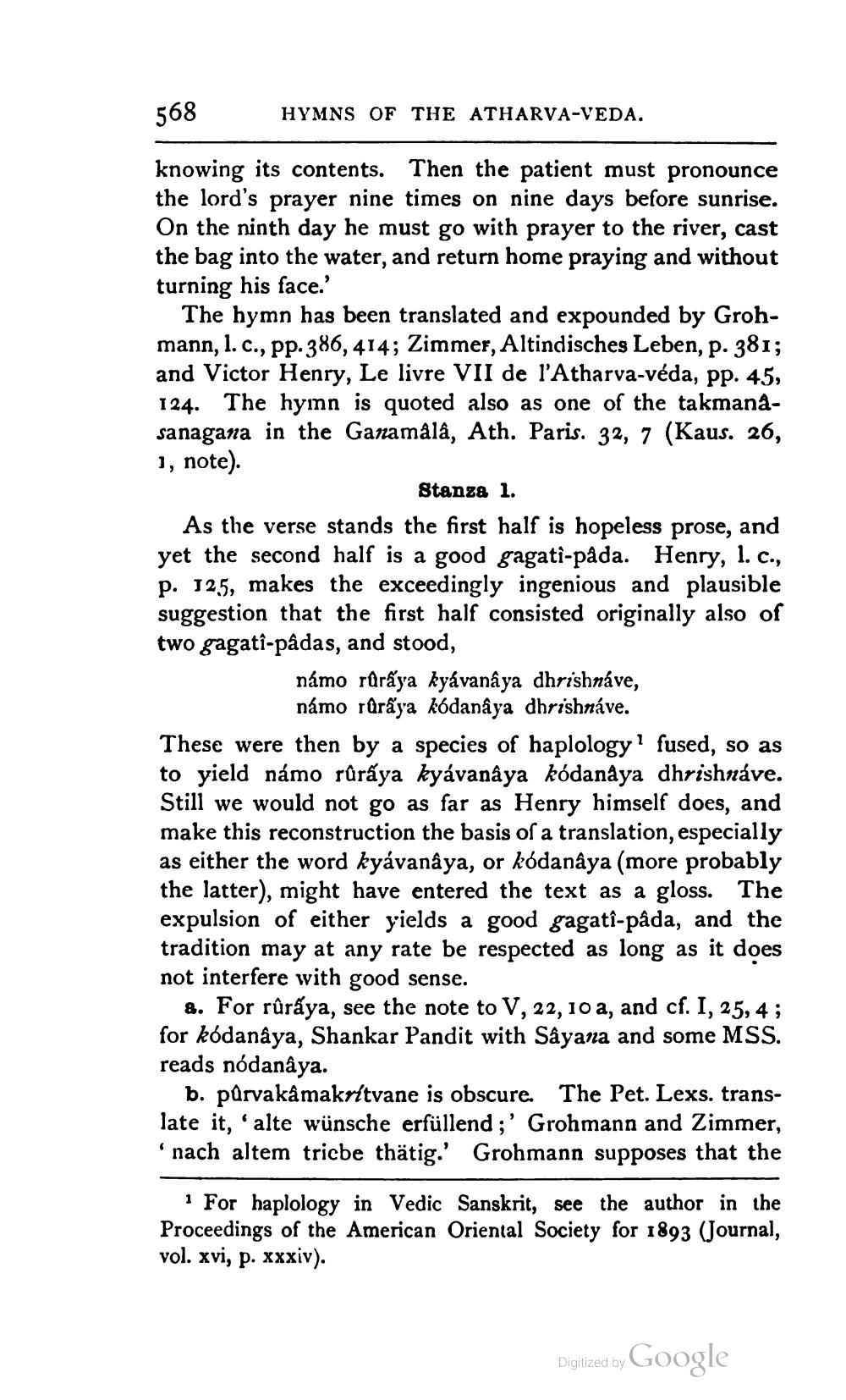________________
568
knowing its contents. Then the patient must pronounce the lord's prayer nine times on nine days before sunrise. On the ninth day he must go with prayer to the river, cast the bag into the water, and return home praying and without turning his face.'
The hymn has been translated and expounded by Grohmann, 1. c., pp. 386, 414; Zimmer, Altindisches Leben, p. 381; and Victor Henry, Le livre VII de l'Atharva-véda, pp. 45, 124. The hymn is quoted also as one of the takmanâsanagana in the Ganamâlâ, Ath. Paris. 32, 7 (Kaus. 26, 1, note).
HYMNS OF THE ATHARVA-VEDA.
Stanza 1.
As the verse stands the first half is hopeless prose, and yet the second half is a good gagati-pâda. Henry, 1. c., p. 125, makes the exceedingly ingenious and plausible suggestion that the first half consisted originally also of two gagatî-pâdas, and stood,
námo ruraya kyávanâya dhrishnave, námo rurẩya kódanâya dhrishnáve.
These were then by a species of haplology' fused, so as to yield námo rûraya kyávanâya kódanâya dhrishnáve. Still we would not go as far as Henry himself does, and make this reconstruction the basis of a translation, especially as either the word kyávanâya, or kódanâya (more probably the latter), might have entered the text as a gloss. The expulsion of either yields a good gagatî-pâda, and the tradition may at any rate be respected as long as it does not interfere with good sense.
a. For rûraya, see the note to V, 22, 10 a, and cf. I, 25, 4; for kódanâya, Shankar Pandit with Sâyana and some MSS. reads nódanâya.
6
b. pûrvakâmakrítvane is obscure. The Pet. Lexs. translate it, alte wünsche erfüllend;' Grohmann and Zimmer, 'nach altem tricbe thätig.' Grohmann supposes that the
1 For haplology in Vedic Sanskrit, see the author in the Proceedings of the American Oriental Society for 1893 (Journal, vol. xvi, p. xxxiv).
Digitized by
Google




